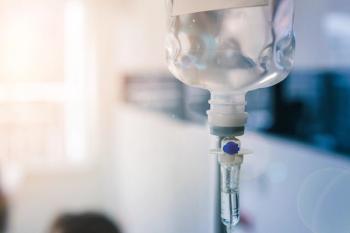
Reflections on the ASHP Midyear
The ASHP Midyear Clinical Meeting offers an opportunity to take the pulse of the profession and learn about new trends and concerns in health-system pharmacy.
I just returned from an exciting ASHP Midyear Clinical Meeting in Orlando, Florida. At the meeting, I had the chance to ride a roller coaster for the first time in 15 years (the Incredible Hulk was thrilling, and I would highly recommend it), to see people I had not connected with in a few years, to enjoy the warm weather, and to learn about new trends in our profession. I always see this meeting as an excellent way to finish the year and help jumpstart the next one. During the course of the week, I had an opportunity to make a few reflections about the profession that I offer here for your consideration.
Talking to people in the hallways is always the best way to learn about the current and impending pressures and opportunities for directors of pharmacy and health systems. Here are a few recurrent themes I noticed in these conversations:
- Specialty pharmacy: For many years, specialty pharmacy distribution has not been a focus of medical centers. Hospitals have been fine with external companies managing that aspect of drug distribution. With the increased focus on ambulatory care, the development of accountable care organizations, the growth of the number of medications in restricted drug distribution networks, and the need for new sources of revenue, hospitals are attempting to build out their own specialty pharmacies. Hearing about the revenue opportunities for large academic medical centers presented by specialty pharmacy was both impressive and a bit shocking.
- 340B: With the shifts in health care financing and the implementation of the Affordable Care Act, there is a lot more focus and attention on 340B participating organizations. The number of external audits evaluating current institutional compliance is increasing, and more hospitals are trying to qualify. There is also a lot more focus by the government on ensuring program integrity. When a hospital does qualify for 340B, the specialty pharmacy net revenue opportunity is even larger. For more on my perspectives regarding 340B, please see my editor’s note in the September Health-System edition of Pharmacy Times.
- Consolidation of hospitals: There are very few unaffiliated hospitals left. Smaller hospitals struggle to survive financially and tend not to have access to the capital for necessary improvements. Large health systems are in acquisition mode, hoping to increase the number of people served. This is helping to produce larger and more diverse systems, changing the whole paradigm of care delivery across multiple institutions.
- Consultants: It appears that many institutions have just completed an engagement with consultants, are currently using consultant services, or are planning to use them. This new focus appears to be emanating from the ongoing change in health care financing. While I hope this will not lead to a reduction in the pharmacy workforce, the usual reason for engaging a consultant is to reduce overall expenses.
In the sessions that I attended at the meeting, I found a big difference between those that presented data and those that did not. I am still amazed at the number of technology talks I attend that center around the proposed benefits of an investment with little evaluation of its true impact. I firmly believe that data should drive all decisions made by pharmacy administrators. Unfortunately, this is not always the case, as was apparent in some of the presentations. If a new technology or change in practice cannot be justified by producing a positive return on investment, why should we consider making the investment?
I was also amazed at the number of international attendees.
Finally, the growth in pharmacy residency programs is impressive. The annual ASHP Whitney Reception for current residents was somewhat overwhelming and drove home the sheer volume of aspiring pharmacists. However, the number of available positions continues to fall short of the number vying for them.
For me, the ASHP Midyear Clinical Meeting is a “can’t miss” event. I hope I have the chance to see you there next year.
Newsletter
Stay informed on drug updates, treatment guidelines, and pharmacy practice trends—subscribe to Pharmacy Times for weekly clinical insights.


















































































































































































































